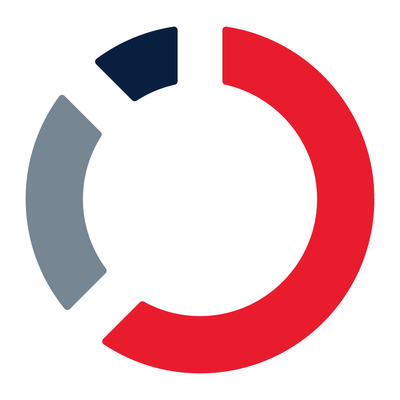IT Helps Fight Year Of Decline
Manufacturers turn to technology to cut costs and reduce inventories.


 It's been a difficult year for U.S. manufacturers, arguably the sector hardest hit by the economic downturn. From telecommunications and information display maker Corning Inc. to diversified industrial conglomerate Ingersoll-Rand Co., many manufacturing companies on the InformationWeek 500 list have revised their 2001 earnings downward, closed plants, or laid off hundreds of workers.
It's been a difficult year for U.S. manufacturers, arguably the sector hardest hit by the economic downturn. From telecommunications and information display maker Corning Inc. to diversified industrial conglomerate Ingersoll-Rand Co., many manufacturing companies on the InformationWeek 500 list have revised their 2001 earnings downward, closed plants, or laid off hundreds of workers.
August marked the 13th consecutive month of decline for the U.S. manufacturing sector, according to the National Association of Purchasing Managers. Because of the glum economy, the preoccupation that IT executives in the industry had last year with E-business strategies and Internet exchanges has been overshadowed by an urgent call to slash operational costs and reduce massive inventory pileups.
Just ask Charlie Peters, senior executive VP and E-business leader at Emerson, a $15.55 billion diversified manufacturer in St. Louis with 43 consecutive years of earnings growth--a record unmatched by any other publicly traded U.S. company. In July, Emerson reported an 11% decline in earnings per share for the third quarter ended June 30, and sales slid 3%. The company expects to report the first decline in year-end earnings per share in more than four decades for fiscal 2001 because of a sharp drop in sales and profit in its electronics and telecom business. Peters' highest priority now is to wring as much cost out of operations as possible, using the E-business systems that Emerson has been building during the last couple of years.
"Right now, the economic impact on sales is pretty dramatic," says Peters, whose company ranks in the top third of the InformationWeek 500's manufacturing index. "We're in the most severe period we've ever faced in managing our costs down."
A parts database that Emerson calls Materials Information Network, which went live in January, is helping consolidate buying activity across 60 divisions, steering purchasers and engineers toward the lowest-cost suppliers. The system, built on software from i2 Technologies Inc., stores information about preferred suppliers, special pricing, and detailed product specifications on the materials that Emerson uses to make its products.
Emerson officials anticipate that Materials Information Network, which took two years and $15 million to implement, will save the company $30 million this year and $500 million by 2005 by decreasing the amount Emerson spends on direct supplies--currently $5 billion annually--and administrative overhead. For instance, using the data-analysis tools in the parts database, a division can easily identify the lowest price the company is paying for a particular kind of screw, then request that same price from the vendor.
With 70% of its sales tied to the weakened telecommunications market, Corning also is focused on reducing costs through creating supply-chain efficiencies wherever possible. In July, the $7.13 billion Corning, N.Y., company--which produces optical fiber, cable, hardware and networking equipment, photonic components, and LCD glass, among other products--said it would close three plants. It took a charge of $273 million in the second quarter ended June 30 to write off excess and obsolete inventory as tele-com customers, concerned about overcapacity in their networks, canceled orders. The company said it would eliminate 8,000 jobs this year, about 20% of its workforce.
"I've worked in a number of manufacturing and service industries, and this is one of the more unusual downturns I've ever seen," Corning CIO Richard Fishburn says. There's no sense when demand will return to previous levels. "Everyone in every sector is saying, 'I really don't know when my customers are going to buy again,'" he says.
Supply-chain and manufacturing planning systems from i2 Technologies and PeopleSoft Inc., which Corning has deployed during the last year in its unit that manufactures flat-panel displays, are helping that group respond more quickly to fluctuations in demand by accelerating production planning time from five days to a matter of hours. Now, when a customer changes an order in the 30 days between placing the order and confirming it, Corning can act swiftly to accommodate the change. Previously, the company had to produce everything called for in the original order and then address changes. By that time, it may have overproduced and created excess inventory, or it may not have made enough items, causing it to rush the extra orders.
The upshot, Fishburn says, is that expedited air shipments of unfinished flat-panel screens from its Harrisburg, Ky., plant to customers in Japan and Taiwan, who finish them for use in television sets and notebook computers, is down from 90% to 40% of all orders. Corning is only halfway through the installation, and Fishburn says the company is making great strides in becoming a make-to-order manufacturer--the Holy Grail of manufacturing because the model can practically eliminate inventory. "Instead of building for stock, you're building to deliver," Fishburn says.
Such systems haven't been installed in Corning's photonics and other fiber-optics divisions, where order cancellations have been the most severe. But they wouldn't have helped anyway, Fishburn says. During the last several years, Corning's optical-fiber business couldn't fill orders fast enough and was sold out for months in advance. As it committed to orders ahead of schedule, the division accumulated inventory to meet future demand. Then things changed. "All of a sudden, the curtain drops and orders go away," Fishburn says. "It's difficult to attach what's happening to inventory systems."
Corning's situation isn't unique, says Norbert Ore, chairman of the National Association of Purchasing Managers' Manufacturing Business Survey committee and group director of strategic sourcing and procurement at paper-and building-products manufacturer Georgia-Pacific Corp. A lot of companies were growing quickly in the last year or two--at 60% or more a year--and with business moving so rapidly, forecasting was next to impossible. "People start to build inventories to protect themselves," Ore says. "Technology can't offset a tremendous inventory build like what we saw over that last year and a half."
While cutting costs and inventory has become the rallying cry of most manufacturers this year, many have remained committed to E-business initiatives that tie them more closely to customers and distributor networks. Defense contractors Newport News Shipbuilding and GenCorp Inc., for example, continue to deploy collaborative project-management tools that help them work more productively with prime contractors and the government over the Web. And Kimball Industries Inc., a $1.2 billion furniture and electronics company in Jasper, Ind., has under way several dealer portal initiatives that are designed to save the company money as well as help sales reps win more business. Kimball sells its finished office furniture through representatives, who can now check the status of orders and inventory online. The portal, which Kimball developed in-house, helps dealers service clients more effectively by giving them instant access to data and saves Kimball staff from spending time on "mundane inquiries," CIO Gary Schwartz says. The portal, up and running since December, has more than 100 users.
In January, Kimball plans to introduce more online software, including a product-visualization and-configuration tool that dealers can use to create a rendering of what a customer's office will look like from different angles and in different lights. The software package from 20-20 Technologies Inc. should also reduce ordering errors by providing reps with a rules engine that specifies which products must be ordered with others. "It will make their job easier and give us cleaner orders," Schwartz says.
SPX Corp. in Muskegon, Mich., has also focused on order accuracy in its Lightnin division, which makes custom-engineered mixing machines that go into processing equipment used by chemical, pharmaceutical, mining, paper, and petroleum companies. An online quote system lets sales representatives and customers design orders using computer-aided design files. Lightnin now guarantees 100% order accuracy, up from 40% previously, the company can define orders in a couple of hours, instead of taking as long as three weeks.
"Better orders hit the floor and they aren't plagued with changes," SPX CIO Peter Sattler says. "It also helps us collect our cash faster because customers get orders when they need them."
Ingersoll-Rand Co., an $8.8 billion diversified industrial manufacturer in Woodcliff Lake, N.J., is deploying Web technologies to make its distribution network more effective. In April, the company acquired a nearly 20% stake in Tavant Technologies Inc., whose applications improve interactions among manufacturers and their channel partners. The software now provides an online portal where Ingersoll-Rand dealers can place and track orders and check inventory at the company or at other distributors.
Ingersoll-Rand doesn't want to disintermediate its sales channels, VP Orshaw says. |
Dealers have reacted positively to the system, says Robert Orshaw, VP of E-business technology at Ingersoll-Rand, mainly because they have exclusive territory agreements and don't compete directly with each other. Thirty of 600 dealers representing Ingersoll-Rand's line of Bobcat construction equipment use Tavant. Ingersoll-Rand executives want to drive adoption of the system out to most of the company's Bobcat dealers and then to a major subset of all its 3,000 dealers.
The greatest anticipated benefit of the system, says Orshaw, is that it will let the company team with its dealers on marketing and service, and gather data on customers and interact with them for the first time. For instance, if a customer orders a product from a dealer and Ingersoll-Rand later upgrades it, the company can notify the customer directly via E-mail. "Today, we don't know a lot about the end user of our products," Orshaw says. "We want to work with dealers to create global marketing campaigns. It gives us more business, as well as the distributor."
Emerson, an Ingersoll-Rand competitor, is taking a different approach to E-business with customer-relationship management software that lets it reduce the distribution roles of its dealers and wholesalers. Emerson is implementing CRM software from E.piphany Inc. that lets it do online marketing, account management, and order-taking directly with business customers. Company officials say 80% of Emerson's divisions provide some customer service online, though distributors are still needed to maintain some local sales, inventory, and support presence. Emerson, Peters says, is concentrating on the people with purchasing power. "Distributors, wholesalers, and reps don't have any money," he says. "Focus your attention on the person making the decision to purchase your product. Build a dialogue and relationship with that customer."
Peters says the opportunity presented by the Internet for a different customer-service cost structure can change the economics of his business. Emerson typically pays margins of 20% to 25% to its distributors, but it's hoping the Web-based CRM deployment will help to push that down, at least in some cases. Of course, distributors aren't thrilled. "In the worst case, the distributors say, 'I own your customer; I'm either doing it all for 20% or nothing,'" Peters says.
Analysts say efforts among manufacturers to circumvent their distribution channels have met with mixed results. In cases where distributors add real value, it's better to make them more efficient with Web tools such as Tavant. Otherwise, AMR Research analyst Michael Burkett says, there's strong appeal for manufacturers to communicate directly with customers. "You'll be closer to them and capture data about how they're using your product," Burkett says. "That has companies asking, 'Do I sell direct to my customer, or do I continue to leverage my channel?'"
Emerson says it has already had success using online sales and support software to reduce the dealer's role in its Chromalox division, which provides industrial heating systems and where its distribution network was weak. This let the division offer customers lower prices, Peters says; that group has increased sales recently, even as competitors' sales declined.
Ingersoll-Rand has good reason for seeing things differently because dealers across its lines add great value to its products. "It's not our intention to disintermediate our channels at all," Orshaw says. "In order to do that, we'd have to create the identical infrastructure that our dealers and distributors have now. The cost of that is astronomical. We don't want to circumvent the value our dealers add--we want to enhance it."
Closeup Maunfacturing
Rank | Company | Revenue in millions | Revenue Change | Income (loss) in millions | Income Change | IT employees |
|---|---|---|---|---|---|---|
4 | Snap-on Inc. | $2,176 | 11.8% | $149 | 16.7% | 260 |
18 | Parker Hannifin Corp. | $5,355 | 7.9% | $368 | 18.5% | 955 |
21 | Chamberlain Group Inc. | - | - | - | - | 80 |
58 | Shaw Industries Inc. | $4,108 | 16.0% | $228 | 1,004.8% | 350 |
60 | Emerson | $15,545 | 8.9% | $1,422 | 8.2% | 3,100 |
68 | General Electric Co. | $129,853 | 16.3% | $12,735 | 18.8% | 7,000 |
82 | Ingersoll-Rand Co. | - | - | - | - | 1,000 |
97 | 3M Co. | $16,724 | 6.2% | $1,782 | 9.4% | 2,800 |
135 | GenCorp Inc. | $1,047 | -2.2% | $129 | 79.2% | 150 |
157 | Tyco International Ltd | $28,932 | 28.6% | $4,520 | 342.3% | 4,500 |
166 | Eaton Corp. | $8,309 | 3.8% | $453 | -26.6% | 1,250 |
190 | Mail-Well Inc. | $2,425 | 28.5% | $28 | -57.2% | 200 |
193 | Mead Corp. | $4,368 | 9.3% | $161 | -22.5% | 350 |
212 | Menasha Corp. | - | - | - | - | 78 |
215 | Riverwood International Corp. | $1,129 | 1.4% | $38 | 170.0% | 58 |
219 | SPX Corp. | $2,679 | -1.2% | $190 | 86.7% | 315 |
224 | Standard Register Co. | $1,266 | -4.6% | ($29) | -35.7% | 260 |
249 | Nortek Inc. | $2,195 | 10.4% | $42 | -15.6% | 280 |
260 | Owens Corning | $4,940 | -2.1% | ($478) | -270.8% | 234 |
267 | Burlington Industries | $1,620 | -1.9% | ($527) | -1,599.9% | 310 |
279 | Pactiv Corp. | $3,134 | 0.7% | $247 | 898.3% | 365 |
288 | Rolls Royce plc | - | - | - | - | 1,400 |
348 | National Services Industries Inc. | $2,566 | 15.6% | $100 | -19.7% | 210 |
351 | Haworth Inc. | $2,000 | - | - | - | 725 |
361 | Armstrong Holdings Inc. | $3,004 | -1.4% | $12 | -14.3% | 272 |
362 | Westvaco Corp. | $3,663 | 30.7% | $246 | 121.2% | 575 |
363 | Unifi Inc. | $1,280 | 2.3% | $38 | -32.4% | 82 |
367 | Rinker Materials Corp. | $2,200 | - | $330 | - | 84 |
371 | Johns Manville Corp. | - | - | - | - | 145 |
386 | W.L. Gore & Associates | $1,404 | 4.8% | $218 | 1.5% | 215 |
393 | NCI Building Systems Inc. | $1,018 | 8.7% | $52 | 13.2% | 40 |
397 | Steelcase Inc. | $3,886 | 16.2% | $194 | 5.2% | 335 |
405 | Sequa Corp. | $1,773 | 3.6% | $24 | 9.0% | 140 |
431 | Illinois Tool Works Inc. | $9,984 | 7.0% | $958 | 13.9% | 1,000 |
434 | Corning Inc. | $7,127 | 50.3% | $1,091 | 108.0% | 1,200 |
438 | Lockheed Martin Corp. | $25,329 | -0.8% | ($519) | -235.9% | 225 |
447 | Flowserve Corp. | $1,538 | 45.0% | $13 | 8.3% | 190 |
451 | Newport News Shipbuilding Inc. | $2,072 | 11.2% | $90 | -7.2% | 420 |
455 | Stryker Corp. | $2,289 | 8.8% | $221 | 1039.2% | 252 |
469 | Kimball International Inc. | $1,201 | 8.5% | $48 | -20.0% | 525 |
470 | Sonoco Products Co. | $2,711 | 6.5% | $166 | -11.5% | 150 |
473 | SKF USA Inc. | $1,176 | 2.6% | $14 | 612.5% | 1,000 |
488 | Beaulieu of America LLC | - | - | - | - | 92 |
491 | Northrop Grumman Corp. | $7,618 | 0.0% | $625 | 30.2% | 3,250 |
500 | Leggett & Platt Inc. | $4,276 | 13.2% | $264 | -9.1% | 260 |
SnapShot 500/Manufacturing |
Inside companies |
Average portion of revenue spent on IT |
Portion of IT organizations that sell services or IT products to other companies |
Portion of companies that say wireless E-commerce will contribute to E-business revenue stream |
Senior IT executive is a member of executive management committee |
Average portion of customers included in electronic supply chain |
How companies divide their IT budgets |
New product and technology purchases |
IT consulting and outsourcing |
Research and development |
Salaries and benefits |
Applications |
Everything else |
How often companies re-examine their IT spending plans |
Daily |
Weekly |
Monthly |
Quarterly |
Twice a year |
Annually |
DATA: INFORMATIONWEEK RESEARCH |
About the Author
You May Also Like






